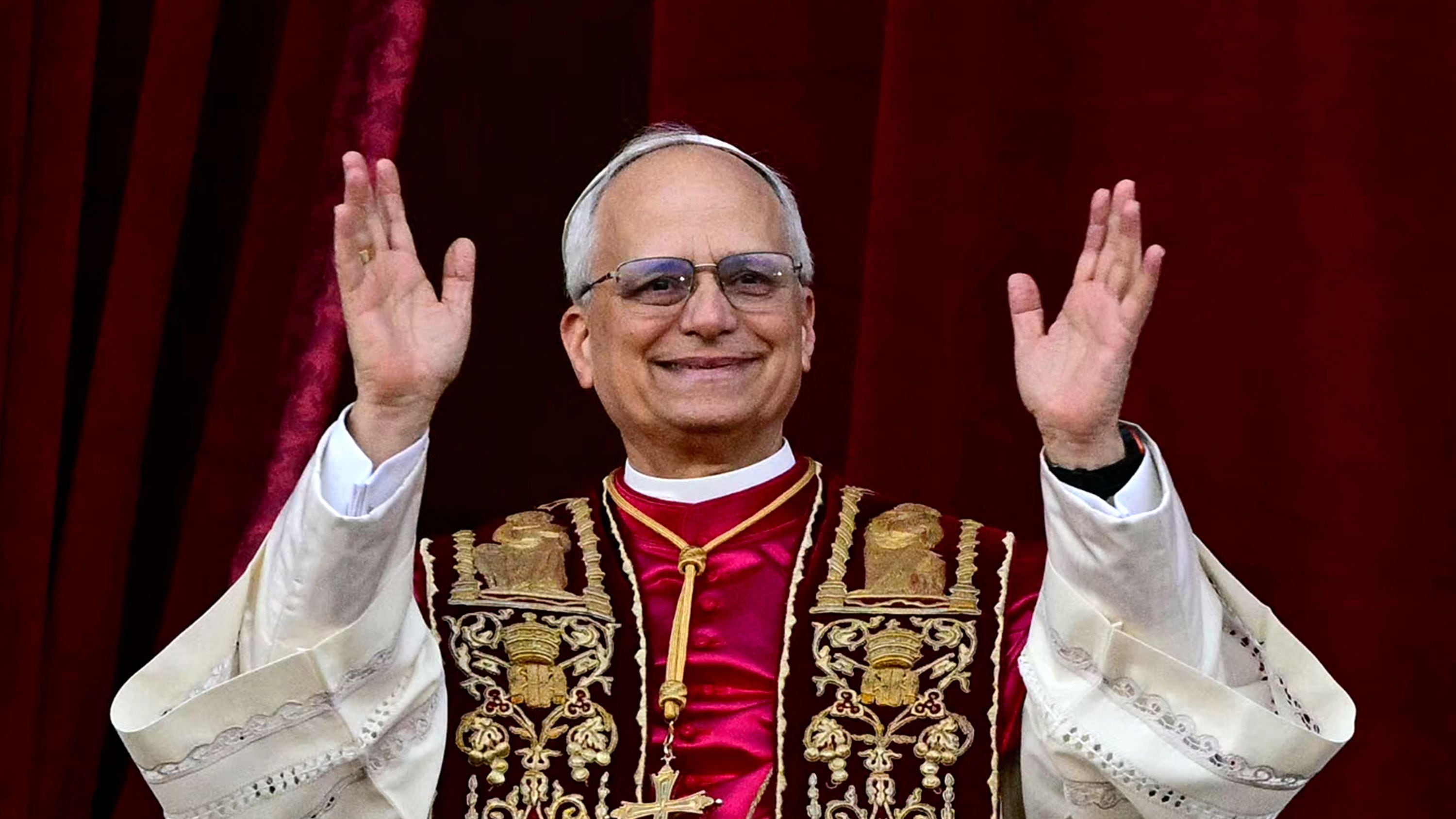The clock showed 6:08 p.m., local time in the Vatican, when white smoke began to emerge from the temporary chimney installed in the Sistine Chapel on Thursday, May 8th, a sign that the elector cardinals had chosen the next pontiff of the Catholic Church.
PUBLICIDAD
Approximately an hour later, the world learned that Cardinal Robert Francis Prevost Martínez had been elected as the 267th pope of the Catholic Church, under the name of Leon XIV.
PUBLICIDAD
Robert Francis Prevost Martínez was born on September 14, 1955 in Chicago, United States. However, his mother is of Spanish descent and he lived in Peru for almost two decades, where he worked as a missionary and educator in various regions, including Trujillo and Chiclayo.
Prevost entered the Order of Saint Augustine (OSA) in 1977 and is the first Pope to come from this religious order in the entire history of the Catholic Church. He made his solemn vows in 1981 and has dedicated much of his life to training and leadership within the order, as well as his pastoral work in Peru and the United States.
Who are the Augustinians, the order to which the new pope Leo XIV belongs?
The Augustinians are Catholic religious who follow the doctrine and spirituality of Saint Augustine of Hippo. They are members of the Order of Saint Augustine (O.S.A.), a mendicant order founded in Rome in the 13th century. Some of their characteristics are:
• The Order of Saint Augustine emphasizes the importance of community, the pursuit of truth, and service to the Church.
• The Augustinians live in community and are dedicated to prayer, preaching, and teaching. They work in various ministries, such as pastors, educators, and missionaries.
• The Augustinians have founded schools and universities in various parts of the world, and have been dedicated to the evangelization of different groups, including indigenous peoples.
Education and recent life of Robert Prevost
He holds a Bachelor’s degree in Mathematical Sciences, a Master’s degree in Divinity, and a PhD in Canon Law. His doctoral thesis addressed the role of the local prior in the Order of Saint Augustine, demonstrating his profound knowledge of ecclesiastical structure.
Between 2014 and 2018, Prevost was appointed by Pope Francis as the apostolic administrator of the Peruvian diocese of Chiclayo, where he was in charge of pastoral care and local church administration. This experience allowed him to get a close look at the reality of the Church in Peru and Latin America.
In 2015, he obtained Peruvian nationality.
Prevost was prefect of the Dicastery for Bishops and president of the Pontifical Commission for Latin America since January 2023, as well as a member of seven dicasteries and the Commission for the Government of the Vatican City State. These responsibilities reflect the great trust that Pope Francis placed in him.
The new pope speaks English, Spanish, Italian, French, and Portuguese. Additionally, he reads Latin and German.
Global challenges
Leo XIV’s election comes at a time when the Catholic Church faces significant global challenges: secularization in the West, the growth of other religions in Africa and Asia, and the need to adapt to new social and cultural realities without giving up its spiritual identity.
For many, a stage that many already qualify as one of “renewal in continuity” begins, that of a pope with a solid theological formation, social sensitivity, and field experience. His figure is outlined as that of a shepherd who knows the world, who has walked on the ground, and who has the will to lead the Church along paths of fraternity, unity, and truth.
With this new pope, the College of Cardinals has opted for a sober, educated, dialoguing, and close to the peripheries profile, as repeatedly requested by his predecessor, Pope Francis.
Therefore, it is very likely that there is a commitment to consolidating the reformist approach that has been promoted in recent years, with an emphasis on a more transparent Church, committed to the poor, and open to dialogue with the contemporary world.
Leo
The practice of adopting a new papal name began in the year 533 when Pope Mercurius, upon being elected Bishop of Rome, decided not to rule with a pagan name, that of a Roman god. He adopted the name John II and since then almost all popes have followed that custom.
Robert Prevost chose the name Leo XIV in honor of the papal tradition and the great popes who carried that name, especially Leo XIII.
The other popes with the name Leo have been: Saint Leo (440–461), Leo II (682–683), Leo III (795–816), Leo IV (847–855), Leo V (903), Leo VI (928–929), Leo VII (936–939), Leo VIII (963–965), Leo IX (1049–1054), Leo X (1513–1521), Leo XI (1605), Leo XII (1823–1829), and Leo XIII (1878–1903).
The oldest pope in history was Leo XIII, who lived for 93 years and 140 days. He was born in Italy in 1810, under the name Vincenzo Gioacchino Raffaele Luigi Pecci, and was elected Supreme Pontiff in 1878. He held the position for 25 years, until his death in 1903.
During his papacy, Leo XIII stood out for his concern for workers and for his encyclical Rerum Novarum, which laid the foundations of the Church’s social doctrine. He was also the first pope to be filmed and photographed, which made him a very prominent figure in the media of his time.
